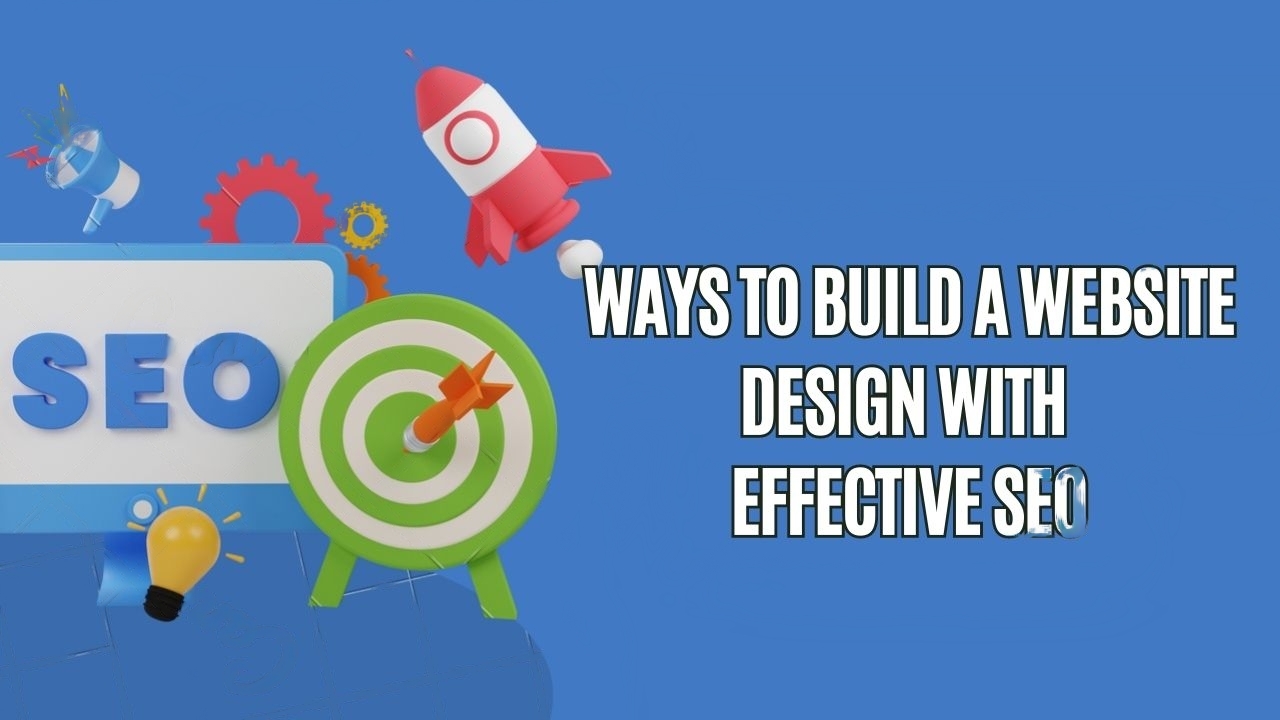11 Ways to Build a Website Design with Effective SEO

Posted on 2023-07-06 17:31:29, by Seawind
In today's digital landscape, having a well-designed website is crucial
for any business or organization. However, more than an aesthetically pleasing
website is needed to drive organic traffic and generate leads. To succeed
online, your website must also be optimized for search engines. Search engine optimization (SEO)
improves your website's visibility and attracts relevant visitors. This blog
post will explore 11 practical ways to build a website design incorporating SEO
best practices, helping you rank higher in search engine results and drive more
organic traffic.
- Responsive Design: Responsive design is no longer an option—it's a
necessity. Ensure that your website design is responsive and
mobile-friendly. With the increasing use of mobile devices, search engines
prioritize mobile-friendly websites
in their rankings. A responsive design ensures your website adapts
seamlessly to different screen sizes, providing a great user experience
across all devices.
- Intuitive Navigation: User experience is critical for both visitors and
search engines. Create a clear and intuitive navigation structure that
lets users quickly find the information they seek. A well-organized
website with a logical hierarchy improves user engagement, reduces bounce
rates, and enhances SEO performance.
- Optimized URL Structure: Optimize
your URL structure by incorporating relevant keywords and keeping it
concise and descriptive. Clear URLs help search engines understand your
website's content and improve user experience by providing an idea of the
page's topic before clicking.
- Keyword Research and
Optimization:
Thorough keyword research is the foundation of effective SEO. Identify
relevant keywords and incorporate them strategically into your website's
design elements, including headings, titles, meta descriptions, image alt
text, and content. However, avoid keyword stuffing and ensure your content
remains natural and readable.
- High-Quality Content: Creating high-quality, original, and valuable
content is essential for SEO success. Craft informative, engaging, and
shareable content that resonates with your target audience. Incorporate
relevant keywords naturally within your content to improve its search
engine visibility.
- Image Optimization: Optimize your website's images by compressing them
for faster loading times and adding descriptive alt text. Alt text helps
search engines understand your images and provides an opportunity to
incorporate relevant keywords, improving your website's overall SEO.
- Page Speed Optimization: Page loading speed is critical to user experience
and search engine rankings. Optimize your website's performance by
minimizing HTTP requests, leveraging browser caching, and optimizing image
sizes. A fast-loading website improves user engagement and reduces bounce
rates, positively impacting your SEO efforts.
- Secure Website (HTTPS): Website security is paramount. Switch to HTTPS by
installing an SSL certificate, which encrypts data transmitted between
your website and users. HTTPS not only protects sensitive information but
also improves search engine rankings. Search engines prioritize secure
websites to ensure a safe browsing experience for users.
- Schema Markup: Implement schema markup to provide search engines
additional context about your website's content. Schema markup helps
search engines understand and present your content in a more enhanced way,
potentially increasing your website's visibility in search results through
rich snippets, knowledge graphs, and other features.
- Social Media Integration: Integrate social media sharing buttons into your
website design to encourage content sharing and engagement. Social signals
like shares and comments can indirectly impact your SEO performance by
increasing brand visibility and driving referral traffic.
- Regular Monitoring and
Optimization:
SEO is an ongoing process. Continuously monitor your website's performance
using analytics tools and make data-driven decisions to optimize your
design further.
- Keep track of keyword rankings,
organic traffic, user behavior, and conversion rates. Regularly update and
refine your SEO strategy to stay ahead of the competition.
Conclusion:
Building a website design with effective SEO requires a
comprehensive approach focusing on user experience and search engine
visibility. By implementing the 11 strategies discussed in this blog post, you
can significantly enhance your website's chances of ranking higher in search
engine results and attracting relevant organic traffic.
From ensuring a responsive design and intuitive navigation to optimizing
URLs, keywords, and high-quality content, each aspect is crucial in improving
your website's visibility and engagement. Additionally, image optimization,
page speed optimization, and implementing HTTPS security contribute to a
positive user experience and higher search engine rankings.
Embracing schema markup and integrating social media sharing buttons
boost your website's visibility and reach, allowing for enhanced search engine
presentation and increased brand exposure.
Remember, SEO is not a one-time effort but an ongoing process. Regularly
monitoring your website's performance, analyzing data, and making necessary optimizations
are vital to staying competitive in the ever-evolving digital landscape.
Following these 11 ways to build a website design with effective SEO, you can establish a robust online presence,
drive organic traffic, and achieve your business goals. Invest the time and
effort into implementing these strategies, and you'll be well on your way to a
successful and optimized website that attracts both search engines and visitors
alike.

